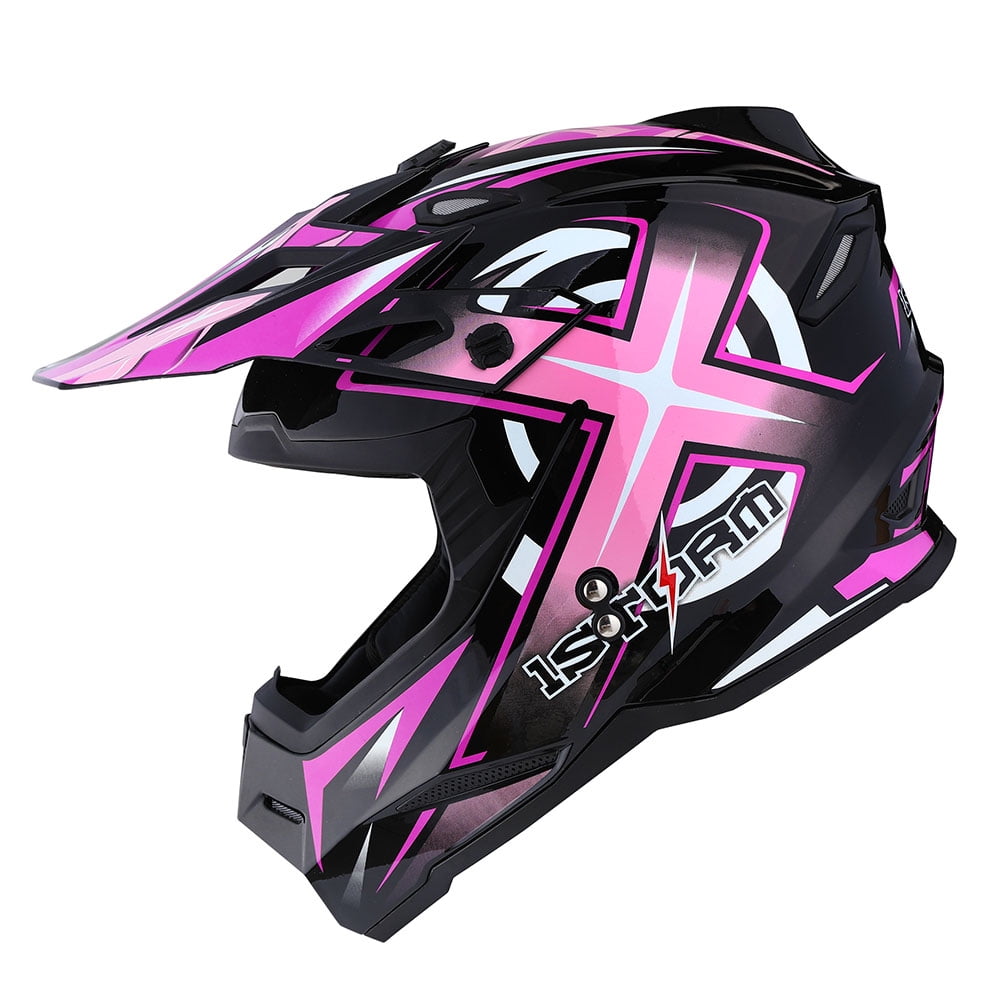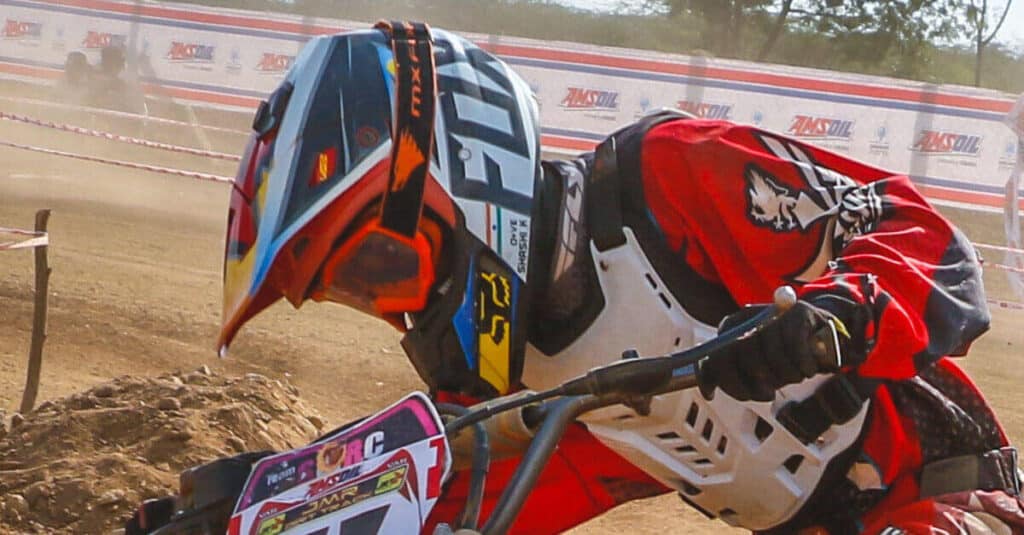What is the safest dirt bike helmet? This is a question every rider should ask themselves before hitting the trails. Choosing the right helmet can mean the difference between a minor scrape and a serious injury. While there’s no one-size-fits-all answer, understanding the key safety standards, helmet features, and different types available can help you make an informed decision.
This guide will delve into the world of dirt bike helmets, exploring the importance of safety standards, essential helmet features, and the various types available. We’ll also provide tips on choosing the right helmet for your riding style and budget, along with essential maintenance and care practices.
Dirt Bike Helmet Safety Standards

Choosing the right dirt bike helmet is crucial for your safety. It’s not just about looking cool; it’s about protecting your head in case of a crash. That’s why understanding helmet safety standards is essential. These standards are designed to ensure helmets meet specific performance requirements, offering you the best possible protection.
Helmet Safety Standards: DOT, ECE, and Snell
Different countries and organizations have established their own safety standards for helmets. These standards define specific tests that helmets must pass to ensure they meet certain safety criteria. Three of the most common standards are DOT (Department of Transportation), ECE (Economic Commission for Europe), and Snell.
- DOT: This standard is mandated by the U.S. Department of Transportation for helmets sold in the United States. DOT-certified helmets are tested for impact absorption, penetration resistance, and chin strap strength.
- ECE: This standard is widely recognized in Europe and other countries. ECE-certified helmets are tested for impact absorption, penetration resistance, chin strap strength, and field of vision.
- Snell: This standard is considered one of the most rigorous in the world. Snell-certified helmets undergo more stringent testing than DOT or ECE helmets, including additional impact tests and tests for shell integrity. Snell-certified helmets are typically used by professional racers and riders who demand the highest level of safety.
Differences Between DOT, ECE, and Snell Standards
While all three standards aim to protect riders, they have different testing procedures and requirements. For example, Snell standards require helmets to pass more impact tests than DOT or ECE standards. This means that Snell-certified helmets are generally considered to offer greater protection in the event of a crash.
Real-World Examples of Helmet Safety Standards
There are countless examples of how helmets meeting these standards have saved lives. Imagine a rider crashing at high speed. A helmet meeting DOT, ECE, or Snell standards can absorb the impact, potentially preventing serious head injuries or even death. While helmets can’t prevent all injuries, they significantly reduce the risk of severe head trauma.
Helmet Features for Enhanced Safety

A dirt bike helmet is more than just a head covering; it’s your primary defense against potential injuries. Choosing the right helmet involves understanding its features and how they contribute to your safety.
Helmet Fit and Size
A helmet’s fit is crucial for its effectiveness. A helmet that’s too loose can shift during an impact, reducing its protective capabilities. Conversely, a helmet that’s too tight can restrict blood flow and cause discomfort.
A snug fit, where the helmet feels secure but not overly tight, is the ideal.
Here’s how to ensure a proper fit:
- Measure your head: Use a tape measure to find the circumference of your head, just above your eyebrows and around the widest part of your skull. Refer to the helmet manufacturer’s sizing chart to determine your helmet size.
- Try it on: Always try a helmet on before purchasing it. Make sure it fits comfortably and doesn’t feel loose or tight.
- Check for a snug fit: When you tilt your head forward, the helmet should stay in place and not move excessively.
- Consider helmet style: Different helmet styles, like full-face or open-face, may have different fit characteristics. Try on different styles to find one that suits your head shape and preferences.
Helmet Materials
The material of a helmet plays a significant role in its ability to absorb impact energy.
- Polycarbonate: A common and cost-effective material known for its durability and impact resistance. It’s often used in budget-friendly helmets.
- Fiberglass: Offers a higher level of impact protection compared to polycarbonate. It’s lighter and more rigid, making it a popular choice for high-performance helmets.
- Carbon fiber: The most expensive and lightweight option, providing exceptional impact resistance and strength. It’s favored by professional riders and those seeking the ultimate in safety and performance.
Helmet Features for Enhanced Safety
Beyond basic construction, several features enhance a helmet’s safety:
- Multiple density foam liners: These liners, made from different densities of foam, absorb impact energy more effectively. The harder foam absorbs the initial impact, while the softer foam cushions the head during the deceleration phase.
- Ventilation systems: Well-designed ventilation systems keep the rider cool and comfortable, reducing fatigue and improving focus. They also help to prevent fogging of the visor.
- Emergency release mechanisms: These features allow first responders to quickly and safely remove the helmet in case of an accident, minimizing potential secondary injuries.
Types of Dirt Bike Helmets
Choosing the right dirt bike helmet is crucial for your safety and comfort on the track. There are three main types of dirt bike helmets, each with its own set of pros and cons. Let’s dive into the details and help you find the perfect helmet for your riding style.
Full-Face Helmets
Full-face helmets provide the highest level of protection for your head and face. They cover your entire head, including your chin, and offer maximum protection from impacts, debris, and weather conditions.
- Pros:
- Maximum protection for your head and face.
- Improved aerodynamics and stability at high speeds.
- Enhanced protection from the elements, including wind, rain, and dust.
- Cons:
- Can be hot and uncomfortable in warm weather.
- May restrict visibility and peripheral vision.
- Can be heavier than other helmet types.
Open-Face Helmets
Open-face helmets, also known as “half-shell” helmets, offer less protection than full-face helmets but are more comfortable and provide better visibility. They cover your head and forehead, but leave your chin and jaw exposed.
- Pros:
- Better ventilation and comfort compared to full-face helmets.
- Improved visibility and peripheral vision.
- Lighter weight than full-face helmets.
- Cons:
- Limited protection for your chin, jaw, and face.
- Less aerodynamic than full-face helmets.
- Offer less protection from the elements.
Modular Helmets
Modular helmets are a hybrid of full-face and open-face helmets. They feature a chin bar that can be flipped up or down, allowing you to switch between full-face and open-face protection as needed.
- Pros:
- Versatility, offering both full-face and open-face protection.
- Improved ventilation when the chin bar is flipped up.
- Better visibility than full-face helmets.
- Cons:
- Can be heavier than full-face helmets.
- May have a less secure fit when the chin bar is flipped up.
- More expensive than full-face or open-face helmets.
Helmet Types, Features, and Suitability
| Helmet Type | Key Features | Suitability |
|---|---|---|
| Full-Face Helmet | Maximum protection, improved aerodynamics, enhanced weather protection | Aggressive riding, high-speed riding, all-terrain riding |
| Open-Face Helmet | Better ventilation, improved visibility, lighter weight | Casual riding, trail riding, warmer climates |
| Modular Helmet | Versatility, improved ventilation (chin bar up), better visibility | Versatile riding, varying weather conditions, those seeking both protection and comfort |
Choosing the Right Helmet: What Is The Safest Dirt Bike Helmet
Finding the perfect dirt bike helmet is like finding the perfect surfboard – it’s all about finding the one that fits your style and needs. But unlike a surfboard, your helmet is crucial for your safety, so making the right choice is super important. Let’s break down the steps to help you find the best helmet for your adventures.
Riding Style and Terrain
Your riding style and the terrain you ride on are key factors in choosing the right helmet. Think about how you ride, the type of trails you conquer, and the risks involved. For example, if you’re a hardcore motocross rider tackling jumps and rough terrain, you’ll need a helmet with extra protection. On the other hand, if you’re cruising on smoother trails, you might prefer a lighter and more comfortable helmet.
Budget, What is the safest dirt bike helmet
Dirt bike helmets come in a range of prices, from budget-friendly options to high-end, feature-packed helmets. Consider your budget and how much you’re willing to spend on safety. Remember, a good helmet is an investment in your well-being.
Personal Preferences
Helmet fit and comfort are crucial. A helmet that’s too tight can be uncomfortable and distracting, while a helmet that’s too loose can be dangerous. Look for a helmet that fits snugly but comfortably. You’ll also want to consider features like ventilation, weight, and design. Some riders prefer helmets with visors, while others prefer goggles.
Reputable Helmet Brands and Models
Many reputable helmet brands offer a wide variety of models to suit different needs. Here are a few popular options:
- Bell Helmets: Bell is a well-known brand known for its high-quality helmets. Their Moto 9 Flex helmet is a popular choice for motocross riders, while the Super 2R is a great option for dual-sport riding.
- Fox Racing: Fox Racing is another top brand in the dirt bike helmet market. Their V4 helmet is a favorite among motocross riders, while the Flux helmet is a popular choice for trail riding.
- Shoei: Shoei is known for its high-performance helmets. Their VFX-WR helmet is a top-of-the-line option for motocross riders, while the VFX-EVO is a popular choice for enduro riders.
- Arai: Arai is a Japanese brand known for its craftsmanship and safety standards. Their RX-7V helmet is a popular choice among professional riders, while the VX-Pro 4 is a great option for trail riding.
Helmet Maintenance and Care

Your dirt bike helmet is your most important piece of safety gear, and it’s crucial to keep it in tip-top shape to ensure it can do its job. A well-maintained helmet is a safe helmet, and regular inspection, cleaning, and storage are essential for extending its lifespan and maximizing its protective capabilities.
Helmet Inspection
Regularly inspecting your helmet for damage or wear is essential for maintaining its safety. A damaged helmet can compromise its ability to protect you in the event of a crash.
- Shell: Check for cracks, dents, scratches, or any signs of deformation. If you notice any damage, it’s time to replace the helmet.
- Visor: Inspect for scratches, cracks, or looseness. A scratched visor can impair your vision, while a cracked or loose visor could detach during a crash. Replace a damaged visor promptly.
- Padding: Examine the padding for tears, rips, or excessive wear. Worn-out padding can compromise the helmet’s ability to absorb impact.
- Straps and Buckles: Check for fraying, tears, or looseness in the straps. Ensure the buckle is functioning correctly and can be securely fastened.
- Ventilation: Inspect the vents for any blockages or damage. Blocked vents can reduce airflow and increase heat buildup inside the helmet.
Cleaning and Sanitizing
Dirt bike helmets get dirty, and it’s important to clean them regularly to remove dirt, sweat, and grime. A clean helmet not only looks better but also helps prevent the growth of bacteria and odor.
- Remove the liner: Most helmets have removable liners that can be washed separately. Follow the manufacturer’s instructions for washing the liner, typically with mild soap and warm water.
- Clean the shell: Use a damp cloth and mild soap to wipe down the helmet’s outer shell. Avoid using harsh chemicals or abrasive cleaners that can damage the helmet’s finish.
- Sanitize the helmet: After cleaning, you can sanitize the helmet using a disinfectant spray or wipes. Follow the manufacturer’s instructions for applying the disinfectant.
- Dry thoroughly: Allow the helmet to air dry completely before storing it. Do not use heat sources like a hairdryer or oven to dry the helmet.
Helmet Maintenance Checklist
A regular helmet maintenance routine can help ensure your helmet is always in top condition. Here’s a checklist to guide you:
- Inspect the helmet: Check the shell, visor, padding, straps, and buckles for any signs of damage or wear. Replace any damaged components immediately.
- Clean the helmet: Wash the liner and wipe down the shell with mild soap and water. Sanitize the helmet with a disinfectant spray or wipes.
- Store the helmet properly: Store the helmet in a cool, dry place away from direct sunlight and heat sources. Avoid storing the helmet in a dusty or humid environment.
- Replace the helmet: Replace your helmet every 5 years, regardless of its condition. Over time, the helmet’s materials can degrade, even if there are no visible signs of damage. Always err on the side of caution and replace your helmet if you’re unsure about its condition.
In the world of dirt biking, safety should always come first. Choosing the right helmet is a crucial part of that equation. By understanding the safety standards, features, and different types of helmets available, you can equip yourself with the best possible protection for your adventures on the trails. Remember to prioritize a helmet that fits comfortably, meets the highest safety standards, and offers the features you need for your riding style.
FAQ
How often should I replace my dirt bike helmet?
It’s recommended to replace your dirt bike helmet every 5 years, regardless of whether it has been in an accident or not. Over time, the materials can degrade and lose their protective capabilities.
What are some reputable dirt bike helmet brands?
Some reputable brands include Bell, Shoei, Arai, Fox Racing, and Troy Lee Designs. These brands are known for their high-quality helmets that meet industry standards and offer innovative features.
Can I use a regular motorcycle helmet for dirt biking?
While a regular motorcycle helmet may seem similar, it’s not recommended for dirt biking. Dirt bike helmets are designed to withstand the specific impacts and forces experienced in off-road riding.
What does a DOT certification mean?
DOT certification signifies that a helmet meets the minimum safety standards set by the U.S. Department of Transportation. However, it’s important to note that other standards like Snell and ECE offer higher levels of protection.